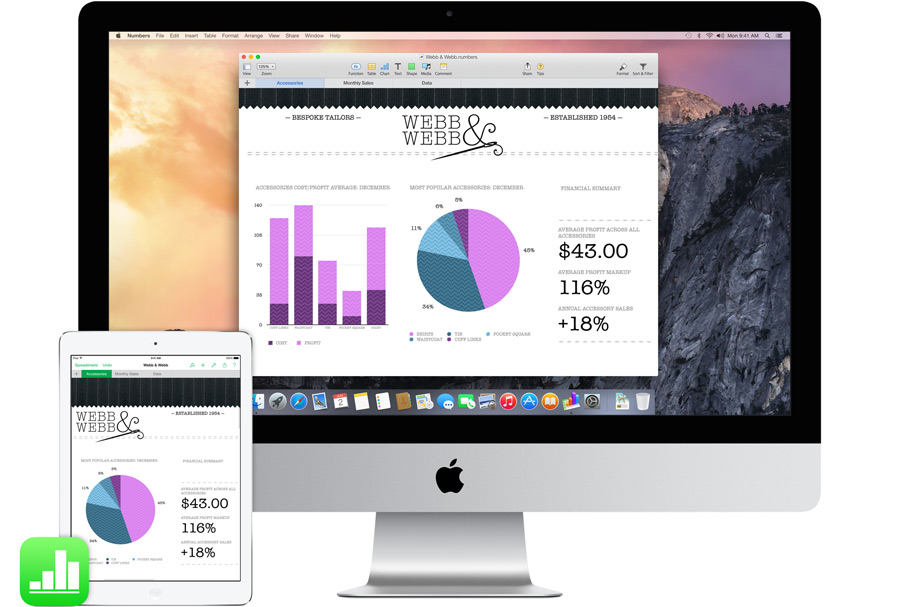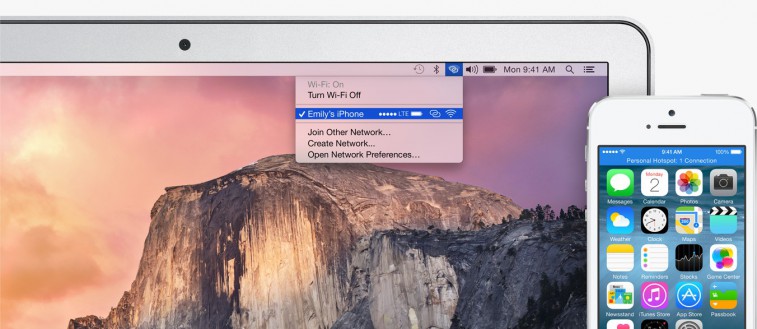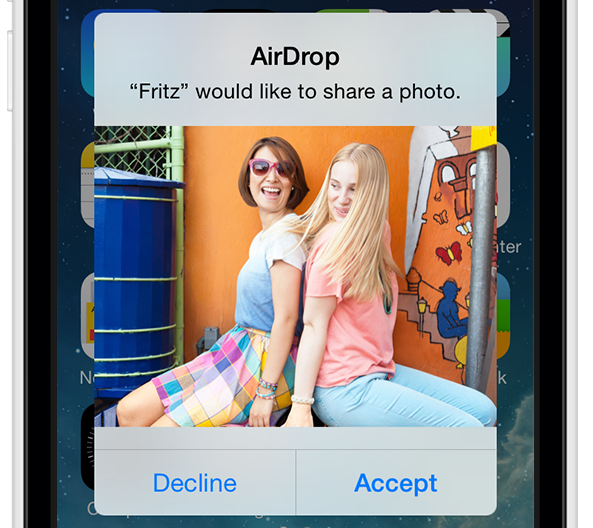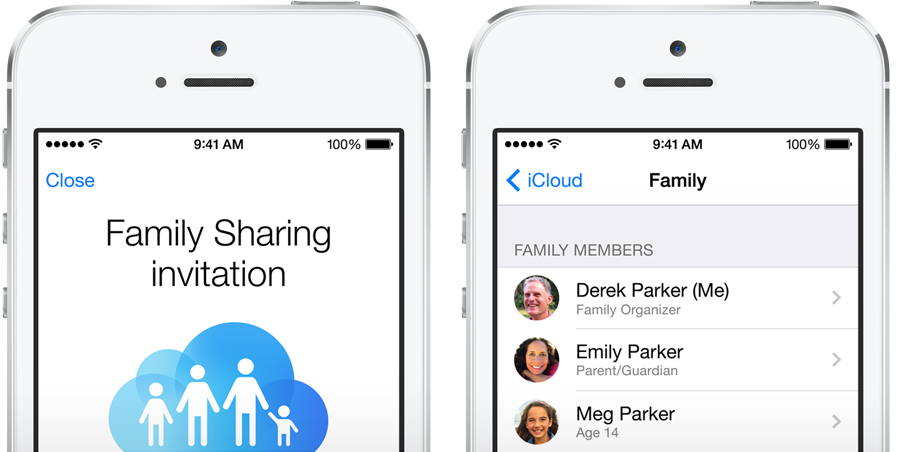
The thing I love most about Apple is how their products interact together. By designing both the hardware and software for their devices, Apple has created a cohesive and intuitive environment that enables products to work seamlessly together, ultimately improving the experience for the end user. Apple has now dubbed its system of allowing products to work together beautifully, "Continuity." Apple announced some exciting new features regarding Continuity between OS X Yosemite and iOS 8. While the new operating systems aren't available yet, here's a little taste of what is to come, along with a few features that are currently available.
Phone Calls & Text Messages
Ever wish you could send a text or answer a phone call on your Mac? Soon, as long as your iPhone is on the same WiFi network as your other device(s), you’ll be able to make and answer calls and send SMS/MMS text messages from your Mac, iPad or iPhone. Continuity uses your existing phone number, so there’s no hassle in setting it up.
What you can do right now:
For now, only iMessage works across all devices. iMessages are the blue chat bubbles in the Messages app and can only be sent to someone who also has an Apple device. You can also Facetime any other Apple product user, be it a Facetime Video call or Audio-only call, from any device.
AirDrop
Airdrop between iOS 8 and OS X Yosemite allows you to easily send files to other devices. For example, you can quickly send a picture from your iPhone to your Mac, edit it, and then send it to your iPad to show a friend - all without the use of email or a storage device.
What you can do right now:
Currently, AirDrop lets you send files directly from Mac to Mac, or iOS device to iOS device. This is great for sending files to friends or family members who are nearby, but also works well if you have multiple Macs or iOS devices. Unfortunately, it's not currently possible to send files between Macs and iOS devices until iOS 8 is released this fall.
Handoff
Handoff lets you pick up document creation and other tasks right where you left off on another device. For example, you can start writing an email on your iPhone and finish it up on your Mac with ease. Or, you could start a Pages document on your Mac and hand it off to your iPad to bring on the go. It works seamlessly. When you’re in an application on one device, an icon for the app will appear on your iOS lockscreen (or to the left of the dock on Mac). Just slide up and the application will open up right to where you left off.
Apple has also opened Handoff up to developers, so you’ll be able to use the feature in 3rd-party apps as well.

What you can do right now:
Currently, there are a few ways to manage tasks between devices, but none are as intuitive and natural as the new Handoff feature. For Mail, you can always save a draft and open it on another device. When you close iWork documents using iCloud, it saves automatically, so it will be exactly the same when you open it on another device. Safari has a feature called iCloud Tabs that lets you see what tabs are open on any of your devices, and open them on the current device. For Maps, you can get directions on your Mac and send them to any device.
Family Sharing
Family Sharing in iOS 8 allows up to six people to share iTunes, iBooks and App Store purchases. Family Sharing requires that all users have the same credit card on file for purchases. This allows parents to approve or deny their kids' purchases via push notifcation on their devices. Family Sharing also creates a shared family Photo Stream and a shared family calendar. You can even find a family member’s lost device or track the location of any family member (with their approval, of course) through Find My Friends and Find My iPhone. Family Sharing eliminates the hassle of having to share one Apple ID between family members for purchases.
What you can do right now:
Family Sharing is a brand new feature, but for now you can try iTunes Home Sharing. Home Sharing lets you share your entire iTunes library with up to five computers in your household, as well as any iOS devices or Apple TV's on your home WiFi network. When you're at the house, this is a fantastic way to listen to music, watch movies and more without having to take up valuable storage space on your device. Here is more information on how to setup Home Sharing.
iCloud Drive & Cloud Storage

iCloud Drive lets you store all your documents in one place and access them on any device. For an overview of iCloud Drive and how it stacks up against the competition, check out our recent post about iCloud Drive.
What you can do right now:
As of right now, the best way to get your files on the go is by using a cloud storage service like Dropbox or Google Drive. Personally, I use Dropbox because it is supported by an array of 3rd-party apps and is easy to setup. By storing your files in Dropbox, you can access them on any device, or by going to Dropbox.com anywhere in the world. However, iCloud Drive will be built into iOS 8 and OS X Yosemite, making it more integrated than other cloud storage providers.
Instant Hotspot Tethering

The new “Instant Hotspot” feature in OS X Yosemite allows you to quickly tether your iPhone to your Mac or iPad with very little setup. Just select your iPhone from the list of WiFi networks and it sets up a connection automatically. When you’re not using data, the hotspot intelligently disconnects to save battery life.
What you can do right now:
Tethering is possible now, but requires some setup on your iPhone or iPad. Also, it is important to be aware that your carrier may charge additional fees for tethering. We recommend the More Everything Plan on Verizon, which includes free Personal Hotspot use.
 Photos
Photos
With iOS 8, every photo you take is uploaded to iCloud, allowing you to access them from any device, anywhere. When you edit a picture, the edit appears on all of your devices right away. Edits are nondestructive, so you can add a filter on your iPhone and still revert to the original on another device. Photos for iOS will be included with iOS 8, but Photos for Mac will not be available until early 2015. Apple is designing the Mac version to replace both iPhoto and Aperture, so the wait makes sense.
What you can do right now:
Currently, new photos appear in your iCloud Photo Stream for 30 days, so you can view them on other devices and in iPhoto on your Mac. Your Photo Stream is automatically imported into iPhoto. You can setup additional Photo Streams to share photos and videos with friends and family members on iCloud.com.
iCloud

iCloud is incredible. It allows you to sync your contacts, calendars, notes, reminders, photos, documents, bookmarks, passwords and more across all your devices. Most of the features discussed in this article require an iCloud account. Check out our post, iCloud Demystified, for an in depth look at how to use iCloud.
iOS 8 and OS X Yosemite will be available this Fall. For more information on Continuity, read about it here.
What about you? What are you looking forward to most about the Continuity feature of iOS 8 and OS X Yosemite? Let us know in the comments below!


